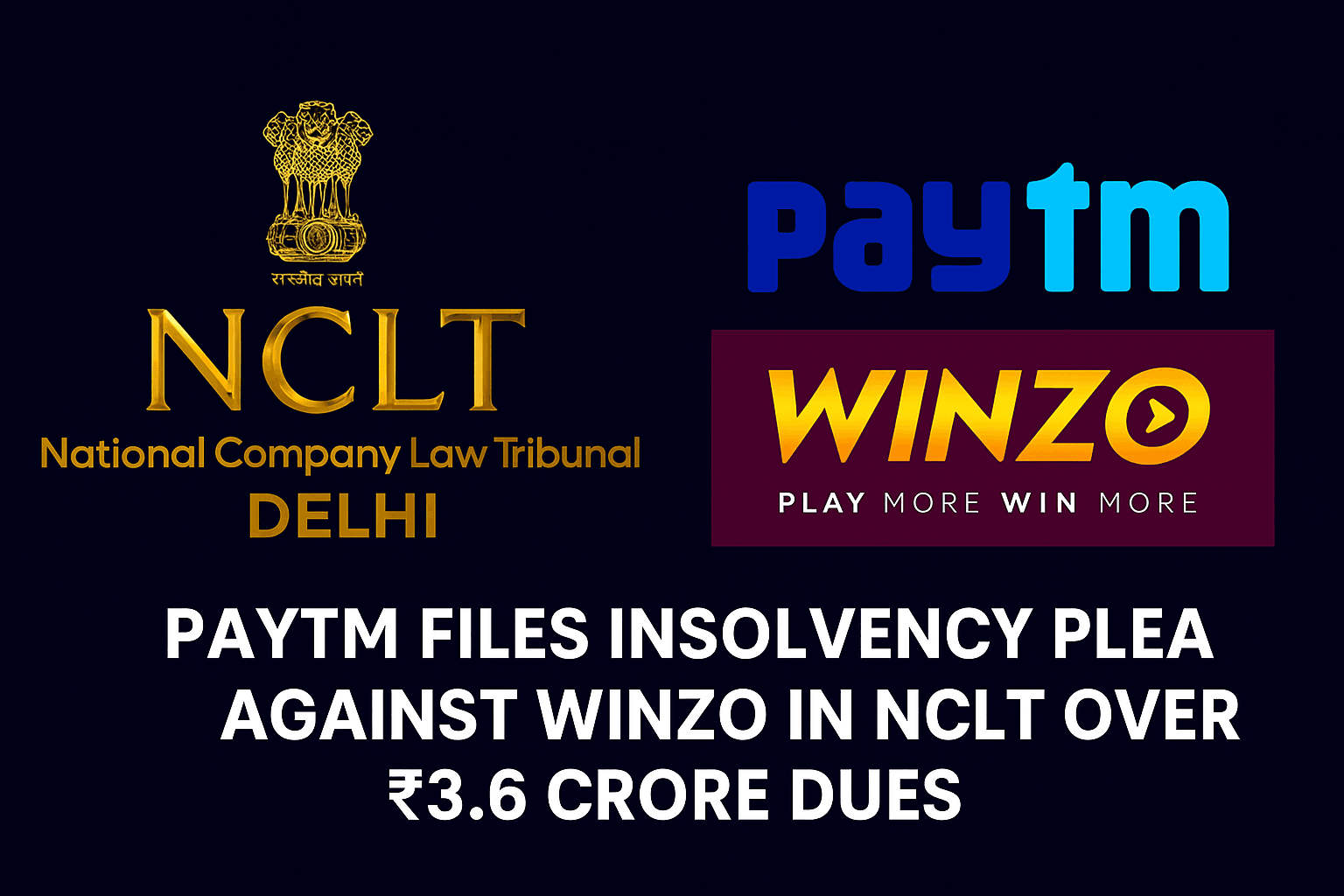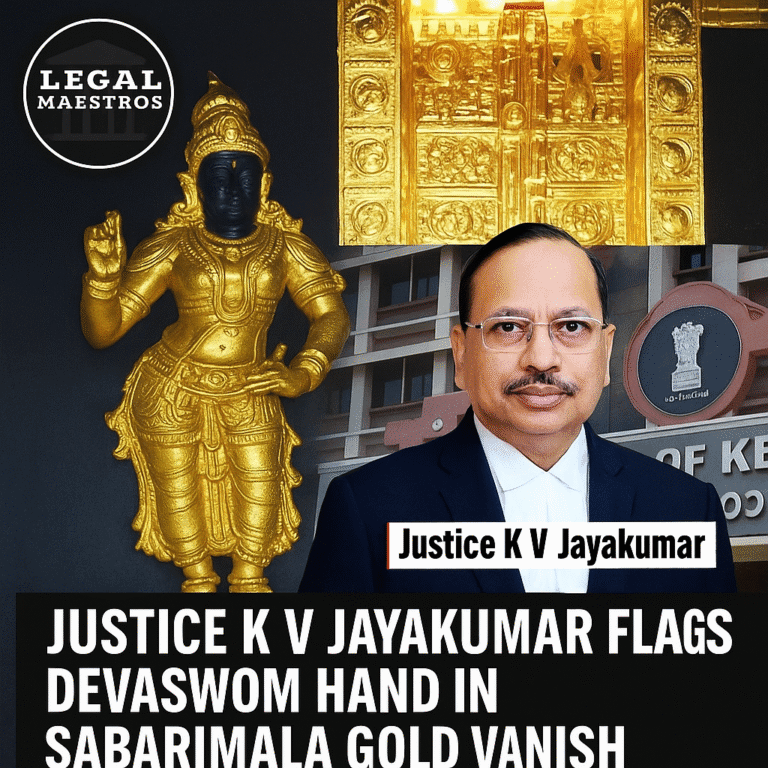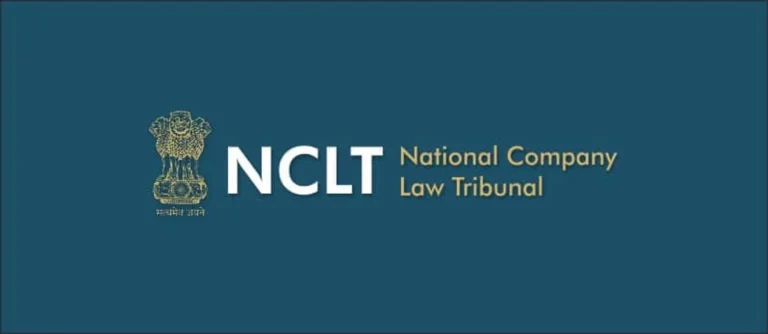
Supreme Court Acquits Appellants in Corruption Case After 40 Years Due to Procedural Lapse and Juvenility
Introduction
A historic decision was handed down by the Supreme Court of India on May 20, 2025, in the case of Ramji Prasad Jaiswal and Others vs. State of Bihar. The decision addressed serious procedural breaches and a demand for juvenile justice in a criminal case that had been going on for a long time. The convictions of three appellants were overturned by the court, not because of the merits of the allegations alone, but principally because of a violation of procedural safeguards under Section 313 of the Code of Criminal Procedure (CrPC), as well as recognition of juvenility under the Juvenile Justice Act. A fundamental reason for the significance of this verdict is that it reaffirms the significance of fair trial principles and due process within the framework of the criminal justice system.
This is a brief overview of the case’s history and facts.
The case was based on a criminal conspiracy that allegedly took place at the Agriculture Market Yard Branch of the State Bank of India in Mohania, Bihar, between the months of September and December of 1982. An accusation was made against Ajay Kumar Srivastava, who was the branch manager at the time, for allegedly misusing his position in order to illegally disburse more than ₹13 lakh by using phony transport receipts. According to the allegations, these receipts were issued by a company known as M/s Rohtas Carriers, which was reportedly run by the three individuals who are appealing the decision: Ramji Prasad Jaiswal, Ashok Kumar Jaiswal, and Bal Mukund Jaiswal.
The prosecution claims that in order to obtain the money, two companies, namely M/s Bishnujee Bhandar and M/s Bansal Stores, filed forged bills. The payments were cleared on the basis of consignment notes that were reportedly issued by the appellants. Based on the findings of the investigations, it was determined that M/s Rohtas Carriers did not have any trucks, an office, or any operations in the area at the time, which suggests that the consignment notes were entirely faked.
For any queries or to publish an article or post or advertisement on our platform, do call at +91 6377460764 or email us at contact@legalmaestros.com.
The Central Bureau of Investigation (CBI) is responsible for filing two First Information Reports (FIRs) during the month of June in 1983. 1986 was the year that charges were initially filed, and in 2006, following a protracted trial, the Special CBI Court handed down convictions to all of the accused. The convictions were upheld by the High Court in the year 2011. After then, the three cases that were being appealed went to the Supreme Court.
Legal Matters of Critical Importance Before the Supreme Court
Two significant legal matters were the primary focus of the Supreme Court. The first worry was with the observance of Section 313 of the Criminal Procedure Code, which stipulates that the accused shall be provided with an opportunity to explain the evidence that has been presented against them. The second question that needed to be answered was whether or not the lower courts had adequately addressed the issue of whether or not the third appellant, Bal Mukund Jaiswal, was a juvenile at the time of the offense.
Juvenility and the Juvenile Justice Act are intertwined.
The individual named Bal Mukund Jaiswal asserted that he was born on December 24, 1965, and that he was consequently only 17 years old at the time that the alleged offense was committed. The court acknowledged receiving his matriculation certificate as well as a report that verified the legitimacy of the document. The Special Judge was given the directive to conduct an investigation in accordance with Section 7A of the Juvenile Justice (Care and Protection of Children) Act, which was passed in the year 2000. It was determined by the Special Judge that he was a minor on the day that the offense was committed.
For any queries or to publish an article or post or advertisement on our platform, do call at +91 6377460764 or email us at contact@legalmaestros.com.
It is possible to assert a claim of juvenility at any point of the proceedings, even after a conviction has been handed down, according to Section 7A of the Juvenile Justice Act. As a result of the fact that more than forty years had elapsed since the commission of the offense, the court determined that it would be impractical to either re-start the trial or place the youngster in a special home. As a result, the court overturned his conviction on the grounds that he was too young to be convicted, so guaranteeing that he was not punished in a manner that exceeded the protective provisions of the legislation governing juveniles.
[Criminal Procedure Code] Section 313 Violation
The inappropriate execution of Section 313 of the Criminal Procedure Code was the second main problem. In accordance with this clause, the trial court is obligated to examine the accused regarding the particular evidence that has been provided against them, thereby providing them with the opportunity to justify their position. Taking this step is necessary in order to guarantee a fair trial.
In this particular case, the trial court had only asked the accused four questions that were more generic and ambiguous, and it had not addressed any of the specific evidence that may be considered incriminating. The highest court in the land made the observation that such a mechanical exercise was in violation of the principles of natural justice and caused significant harm to the defense organization. Due to the fact that the trial court did not ask questions that were both specific and pertinent, the accused were not completely aware of the evidence that they needed to defend themselves against.
For any queries or to publish an article or post or advertisement on our platform, do call at +91 6377460764 or email us at contact@legalmaestros.com.
The court referred to a number of other decisions, such as Shivaji Sahabrao Bobade v. State of Maharashtra and Raj Kumar Singh v. State of Rajasthan, which made it clear that failure to comply with Section 313 of the Criminal Procedure Code might taint a trial if it results in prejudice. It was highlighted by the court that in the event that such an irregularity takes place, the court must either overlook the damning material that was not presented to the accused or, in some instances, order a retrial.
In spite of this, the Supreme Court decided that it would be both unjust and impractical to send the matter back to the trial stage. This decision was made in light of the fact that more than forty years had passed since the crime, and that the trial had concluded in 2006. The delay in and of itself was sufficient grounds for reaching the conclusion that a retrial would not be able to successfully attain justice. As a consequence of this, the Court overturned the convictions of the two appellants who were still under appeal, so granting them the benefit of the doubt.
Involved Provisions and Laws in the Situation
Section 313 of the Code of Criminal Procedure and Section 7A of the Juvenile Justice Act, 2000 are two of the most important legislative provisions that are being investigated pertaining to this particular case. As an additional point of interest, the appellants were initially found guilty of violating the Indian Penal Code’s Sections 420 (cheating), 468 (forgery), 471 (using forged document), and 120B (criminal conspiracy), in addition to Section 5(2) read in conjunction with Section 5(1)(d) of the Prevention of Corruption Act, 1947.
For any queries or to publish an article or post or advertisement on our platform, do call at +91 6377460764 or email us at contact@legalmaestros.com.
Additionally, both procedural and substantive aspects of criminal law were involved in the case. But in the end, the acquittal was brought about by the failure to comply with the procedures that were in place.
The Importance of the Decision
In light of this verdict, the fundamental notion that procedural safeguards are not merely formalities is brought into sharper focus. They are necessary in order to guarantee justice and to safeguard the rights of those who have been accused. Due process cannot be ignored by the legal system, even in cases that have been drawn out for a long time and include serious offenses, as demonstrated by the Supreme Court’s insistence on reasonable standards for fair trials.
Additionally, the verdict strengthens the unique protections that are afforded to adolescents in accordance with Indian law. Even in the event that the discovery is made late in the trial or after the conviction, the rights of a child cannot be overturned. It is expected that this decision will serve as a precedent in future instances that are comparable to this one and involve claims of procedural flaws or juvenility
For any queries or to publish an article or post or advertisement on our platform, do call at +91 6377460764 or email us at contact@legalmaestros.com.
To summarize, the decision that the Supreme Court reached in this particular instance serves as a potent reminder that justice cannot be constructed through the use of shortcuts or procedural omissions. It is imperative that those who have been accused be provided with a reasonable opportunity to explain and defend themselves, and that minors be treated in accordance with the laws that have been enacted for their care and protection. In spite of the fact that the case initially contained allegations of dishonesty and corruption, the ultimate result of the case centered on more fundamental concerns of the legality, fairness, and compliance with human rights within the judicial hierarchy.




![Research Assistantship @ Sahibnoor Singh Sindhu, [Remote; Stipend of Rs. 7.5k; Dec 2025 & Jan 2026]: Apply by Nov 14, 2025!](https://legalmaestros.com/wp-content/uploads/2025/11/Gemini_Generated_Image_s0k4u6s0k4u6s0k4-768x707.png)
![Karanjawala & Co Hiring Freshers for Legal Counsel [Immediate Joining; Full Time Position in Delhi]: Apply Now!](https://legalmaestros.com/wp-content/uploads/2025/11/Gemini_Generated_Image_52f8mg52f8mg52f8-768x711.png)
![Part-Time Legal Associate / Legal Intern @ Juris at Work [Remote]: Apply Now!](https://legalmaestros.com/wp-content/uploads/2025/11/ChatGPT-Image-Nov-12-2025-08_08_41-PM-768x768.png)
![JOB POST: Legal Content Manager at Lawctopus [3-7 Years PQE; Salary Upto Rs. 70k; Remote]: Rolling Applications!](https://legalmaestros.com/wp-content/uploads/2025/11/ChatGPT-Image-Nov-12-2025-08_01_56-PM-768x768.png)